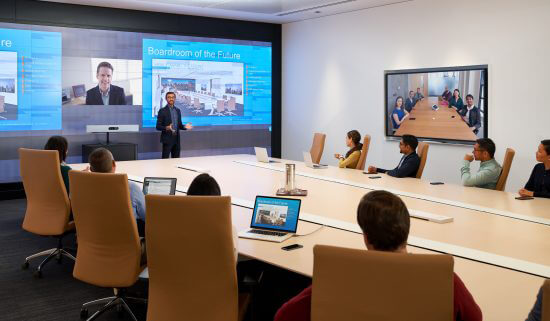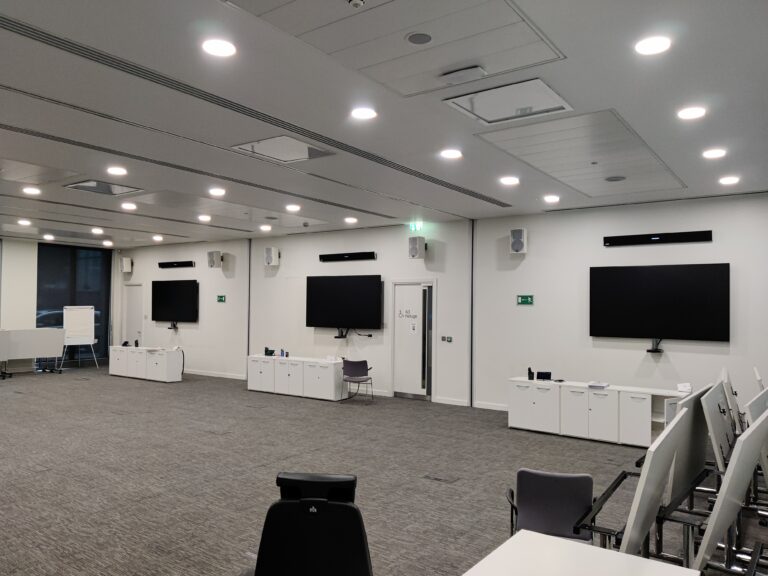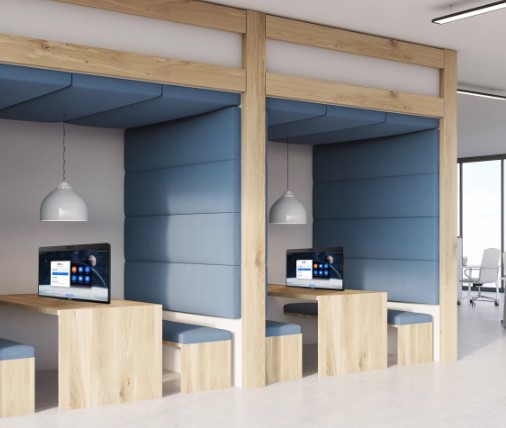In a recent survey of over 150 U.S. CEOs conducted by Chief Executive, a surprising revelation emerged as a catalyst for the return to the office.
The study highlighted a widespread struggle among organisations to foster effective communication, collaboration, and team bonding in remote and hybrid work environments. This sentiment was further echoed by a comprehensive academic study involving economists from Harvard, the Federal Reserve Bank of New York, and the University of Iowa, focusing on software engineers at a Fortune 500 firm. The study found that physical proximity significantly increased feedback, particularly benefiting female and young engineers, emphasising the value of in-person interaction for mentoring and career development.
Responding to these challenges, industry giants like Amazon and Salesforce have chosen to pivot back to traditional in-person work models. However, as this blog explores, this retreat may not be the optimal course of action. While the return to familiar territory may seem tempting, it involves sacrificing the numerous benefits that remote and hybrid work arrangements offer.
The Temptation of Returning to Traditional Office Models
The trend toward in-person work is evident in the survey results, with the percentage of on-site businesses experiencing a significant uptake from 31% in 2022 to 46% in 2023. Hybrid companies decreased from 61% to 48%, while companies with no office presence dropped from 7% to 5%. This shift reflects a common human tendency to gravitate towards the familiar in the face of challenges. However, as companies consider reverting to traditional office-centric models, they risk sacrificing the advantages that remote and hybrid work arrangements have demonstrated.
Giving Up the Hybrid Work Goldmine
Despite the unexpected trend towards a return to the office, CEOs had previously expressed contentment with remote or hybrid work models in a 2022 survey. In 2023, only 5% of companies reported decreased performance due to the shift, raising questions about the reasons behind the sudden shift in sentiment.
The challenges cited by CEOs include the difficulty of maintaining the same level of engagement and participation from remote employees as their in-office counterparts. Furthermore, a study on software engineers at a Fortune 500 firm highlighted the negative impact of remote work on the professional development of junior staff. The findings underscore the importance of addressing these challenges without abandoning the proven benefits of remote and hybrid work arrangements.
The Cognitive Bias Trap: How Our Brains Sabotage Hybrid Work Success
Navigating the shift to hybrid work is made more challenging by the influence of cognitive biases, with a notable focus on the status quo and functional fixedness. The status quo bias favours maintaining the current situation, making leaders hesitant to fully embrace remote and hybrid work models. Functional fixedness leads organisations to apply traditional office-centric models to new environments, resulting in weakened culture, collaboration, team bonding, and communication.
To overcome these biases, leaders must actively challenge their assumptions and beliefs about remote and hybrid work. By consciously weighing the pros and cons of various work models, organisations can make informed decisions that embrace innovation and growth.
Embracing the Hybrid Work Model: A New Frontier
The key to navigating the hybrid work landscape lies in adaptation. Companies must tailor their approach to building culture, fostering collaboration, improving team bonding, and enhancing communication for remote and hybrid work environments. Instead of attempting to force traditional office-centric models onto these new settings, organisations should forge new paths that allow them to leverage the best of both worlds.
Strategic Steps for Success:
- Create a Hybrid-Friendly Culture: Recognise and celebrate the unique strengths of remote and hybrid work, moving away from the “out of sight, out of mind” mentality.
- Rethink Communication Strategies: Adopt communication strategies that foster inclusivity and prevent remote employees from feeling isolated.
- Leverage Technology for Collaboration: Invest in cutting-edge collaboration software to bridge the gap between remote and in-office employees.
- Prioritise Team Bonding and Connection: Organise regular team-building events, both in-person and virtual, to foster a sense of unity.
- Invest in Training and Development: Equip leaders and employees with the skills necessary for success in a hybrid work environment.
- Implement Robust Mentoring Programs: Create structured mentoring initiatives combining in-person and virtual elements to support junior staff.
The Future of Work: Embrace the Change, Reap the Rewards
Rather than retreating to traditional models, organisations must embrace the unique opportunities presented by remote and hybrid work. By doing so, they can position themselves for success in an ever-evolving business landscape, reaping the rewards that come with embracing the best of both worlds. The future of work is here, and it’s time for organizations to adapt and thrive in this new normal.
This blog was inspired by the article written in Forbes Magazine, you can read the full article here
Feel free to contact our Sales Team if would would like any more information on your return to the office or hybrid working environment.














